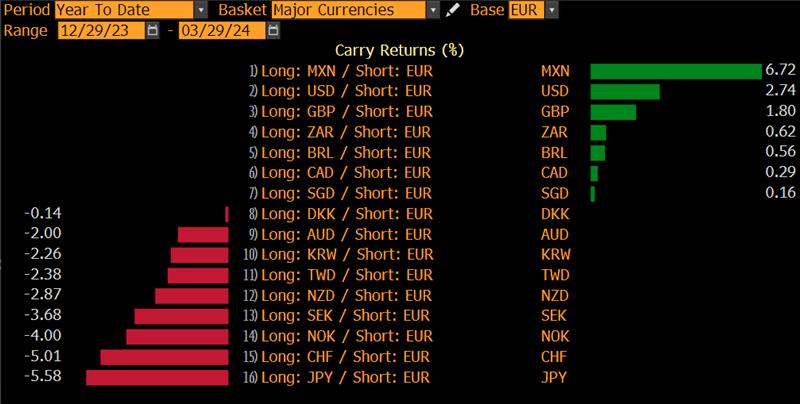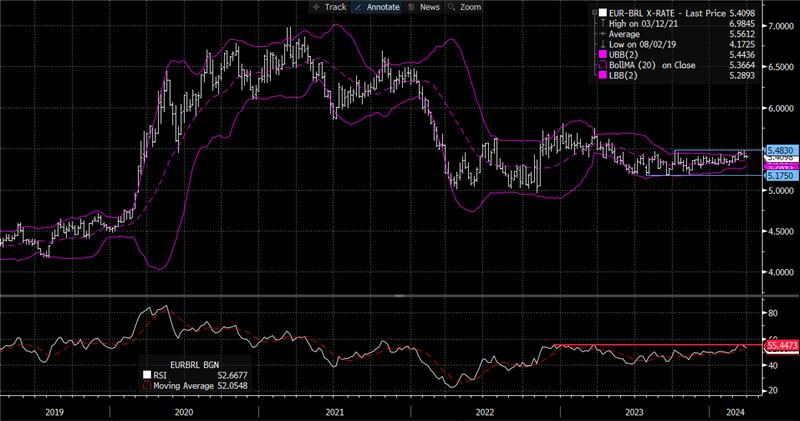The table below shows the performance of carry trades in the main currencies against the euro since the beginning of the year. As a reminder, the typical profile of a good carry trade operation is to find the currency that will not only pay you every night in the context of the interest-rate differential, but also move in the expected direction. That's because you buy a currency offering the highest rate and sell the other.

Source: Bloomberg
Unsurprisingly, we find the JPY at the very bottom, continuing to underperform not only against the European currency but also against all the other G10 currencies (GBP, USD etc.). The MXN also continues to appreciate, as we have already pointed out in various articles. You have to go a little further down the ranking to find the potential gem: EURBRL. With a yield differential in excess of 5%, this is an interesting chart configuration to keep an eye on.

Source: Bloomberg
For several months now, the currency has been moving within a narrow horizontal consolidation band between 5.1750 and 5.4830. At the same time, the RSI is stumbling under resistance around 55. The Bollinger Bands, which reflect the currency's current volatility, are particularly narrow, indicating a lack of movement. A period of contraction is usually followed by a period of expansion. This is when the gaps are created, and when capital gains can be generated. The most aggressive investors will try their luck right now, taking advantage of successive breaks of the lower Bollinger boundary and then of 5.1750 to increase their exposure.

 By
By 
















